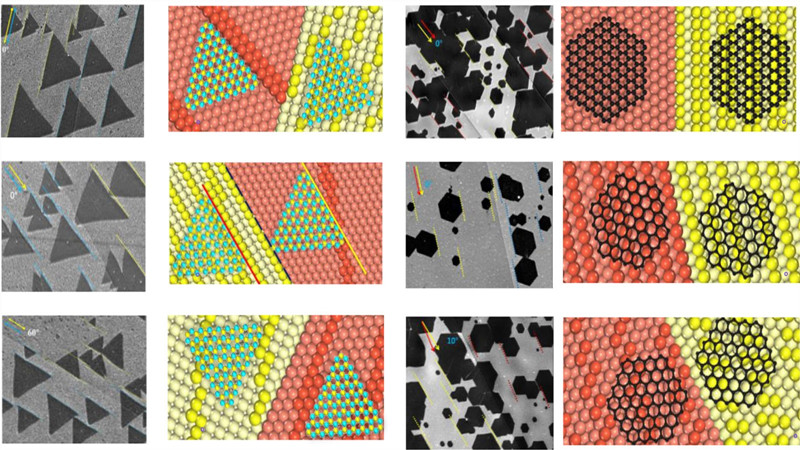The latest research findings on copper foil material for two-dimensional single crystal growth substrate of the Electron Microscope Center of Chongqing University, in collaboration with Chongqing Institute of Green and Intelligent Technology, Chinese Academy of Sciences and Ulsan National Institute of Science and Technology were published recently in Nature Communications online under the title “Single-crystal two-dimensional material epitaxy on tailored non-single-crystal substrates”. Chongqing University, Chongqing Institute of Green and Intelligent Technology, Chinese Academy of Sciences and Ulsan National Institute of Science and Technology are corresponding co-affiliations. Prof. Huang Xiaoxu (Chongqing University), Prof. Ding Feng (Ulsan National Institute of Science and Technology), and Researcher Shi Haofei (Chongqing Institute of Green and Intelligent Technology, Chinese Academy of Sciences) are corresponding co-authors. Associate Researcher Li Xin (Chongqing Institute of Green and Intelligent Technology, Chinese Academy of Sciences), Professor Wu Guilin (Chongqing University) and Dr. Zhang Leining (Ulsan National Institute of Science and Technology) are first co-authors. Professor Tang Wenxin, Professor Huang Tianlin, Professor Li Meng and Doctoral Candidate Guo Jing also participated in the research as co-authors from Chongqing University.

Huang Xiaoxu's team and Tang Wenxin's team of the Electron Microscope Center of Chongqing University started to work with the Chongqing Institute of Green and Intelligent Technology, Chinese Academy of Sciences and Ulsan National Institute of Science and Technology in 2017. The research findings published this time show that the graphene islands epitaxially grown on both sides of the special twin interface on the surface of copper foil have directional nucleation characteristics and can be spliced into high-quality single crystals during growth. The research teams explained this phenomenon from a theoretical perspective, prepared wafer grade copper foil with rich twin boundaries, which had resulted in growth of wafer grade single crystal graphene and hexagonal boron nitride films on the surface of this polycrystalline copper foil. The findings broke the limitation of growing two-dimensional single crystal materials on single crystal substrates for a long time, significantly improved the availability of single crystal two-dimensional materials, and expanded the understanding of the basic theory of material epitaxy.
The research project has been supported by the National Natural Science Foundation and the National Key R&D Program.
Link of the paper: https://www.nature.com/articles/s41467-022-29451-w
